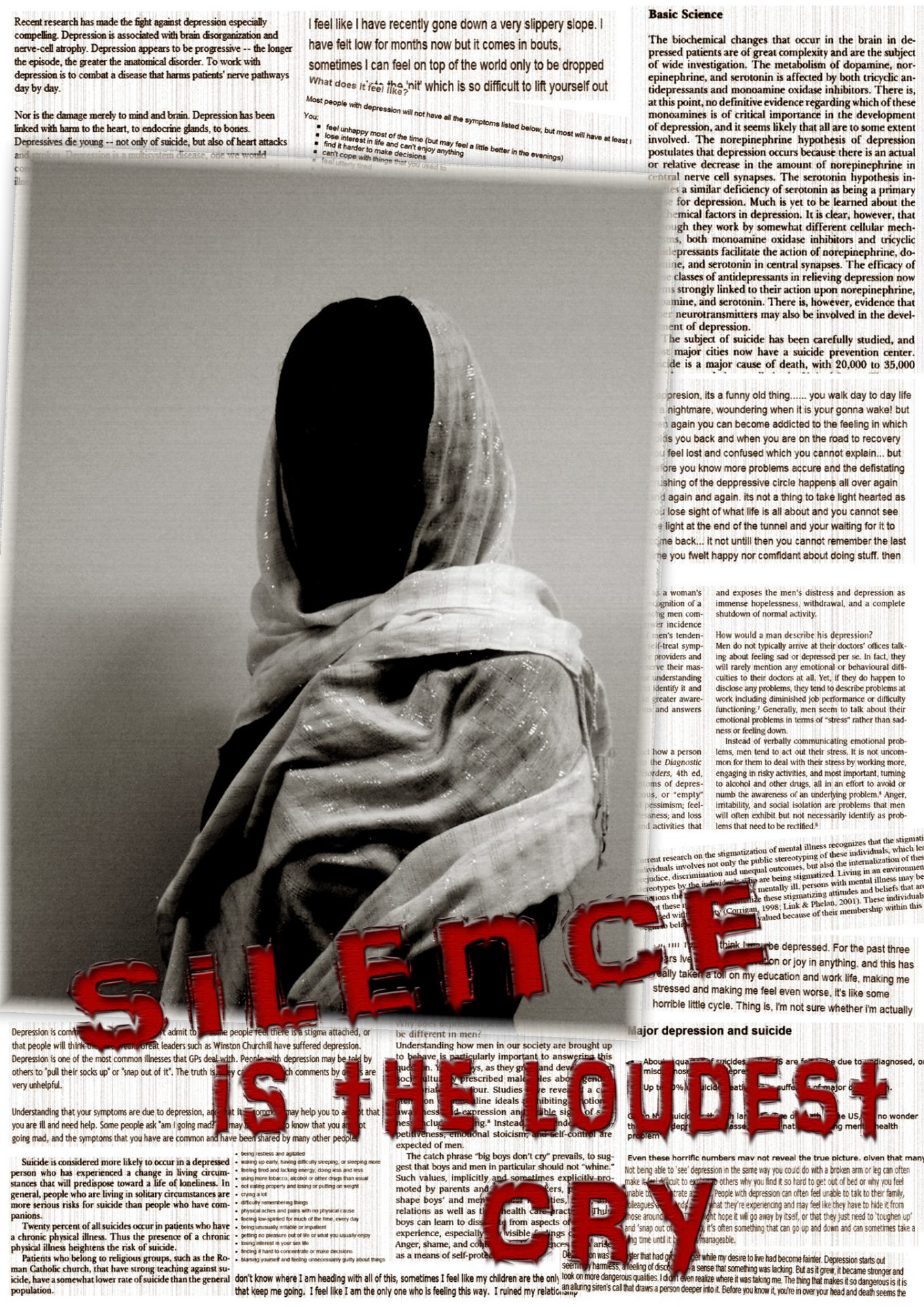Silence is the loudest cry – my approach to depression
I had the opportunity to encounter patients with depression briefly during my GP Attachment. What I noticed firstly was how embarrassed these individuals were about this condition. They seemed to know they needed help but at the same time, they did not want to ask for it. My experiences inspired me to create a portrait of a woman whom face we cannot see. There is just a black hole instead – representing silence, sadness and emptiness. She looks at us but we cannot truly see her. She might be saying something, shouting for help, even crying – but all we can see is a black hole. People suffering from depression very often put a mask on their face trying to give an impression that everything is fine – when inside they cry out for help. The background is constructed from texts taken from different articles about depression.

This piece shows amazing insight to the causes, and effects of depression, and the way GP’s can overlook causes, and generalise the patient, exampled in your story of Joanna. The art encapsulates the effect of depression removing a persons personality (face), and the bold red text expresses the attitudes we must have towards mental health problems, by looking out for eachother and hearing that cry of silence.
The black hole serves as a stark representation of depression in this piece. It emphasises the stifling nature of depression, exacerbated by societal stigma and the fear of social reprisal, effectively silencing those afflicted. Individuals with depression are caught in a constant struggle, endlessly torn between maintaining a facade and seeking much-needed help. The black hole of depression englulfs their cries and their desperate pleas, compelling them to suffer in silence. By drawing attention to the truly horrific reality of depression, this work helps the viewer to understand that despite the tranquil exterior people show, a significant proportion of them are struggling. The work encourages viewers to reasses their perceptions of depression and mental health as a whole, taking a step towards closing the metaphorical black hole silencing those in need.